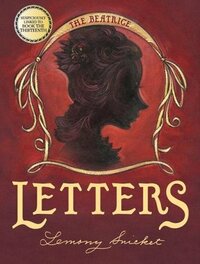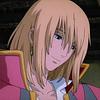Take a photo of a barcode or cover
adventurous
mysterious
fast-paced
Plot or Character Driven:
Character
Strong character development:
No
Loveable characters:
N/A
Diverse cast of characters:
No
Flaws of characters a main focus:
Yes
loved these they were so sweet and add to the lovely mystery
challenging
lighthearted
mysterious
fast-paced
Plot or Character Driven:
Plot
Strong character development:
No
Loveable characters:
Complicated
Diverse cast of characters:
No
Flaws of characters a main focus:
No
It was a cute look into Lemony's relationship with the esteemed Beatrice. Very enjoyable, and full of nice tidbits for fans of the heavily referenced lost love in ASoUE.
This is the most heartbreaking thing I have ever read.
I'm never giving up on this anagram. I will find out your secrets, Lemony Snicket.
I'm never giving up on this anagram. I will find out your secrets, Lemony Snicket.
One of the most beautiful book designs I have ever seen. Also, for lovers of A Series of Unfortunate Events, it will bring back all the things you know and love about the writing of Lemony Snicket: mysterious, informative, and full of love for Beatrice.
The "book" contains a two-sided poster of a shipwreck and a cave. It also contains a bound collection of letters to and from Beatrice Baudelaire. The Letters from Lemony Snicket appear to be to his lost love, the mother of the Baudelaire children. The letters to Lemony appear to be from the daughter of Kit Snicket. There are numerous references to the series in the messages, as well as a more obvious message within cut-out letters in the pages. As this book was published as a lead-in to the 13th book, I think reading that book after this one will shed light on its meaning. The letters in the book spell out "Beatrice Sank" once unscrambled, so is that our main takeaway? We are lead to believe that Beatrice the child survived to ask Lemony Snicket to help her find the Baudelaire children..
The "book" contains a two-sided poster of a shipwreck and a cave. It also contains a bound collection of letters to and from Beatrice Baudelaire. The Letters from Lemony Snicket appear to be to his lost love, the mother of the Baudelaire children. The letters to Lemony appear to be from the daughter of Kit Snicket. There are numerous references to the series in the messages, as well as a more obvious message within cut-out letters in the pages. As this book was published as a lead-in to the 13th book, I think reading that book after this one will shed light on its meaning.
“I will love you if I never see you again, and I will love you if I see you every Tuesday…I will love you as misfortune loves orphans, as fire loves innocence, and as justice loves to sit and watch while everything goes wrong….I will love you no matter what happens to you, and no matter how I discover what happens to you, and no matter what happens to me as I discover this, and no matter how I am discovered after what happens to me as I am discovering this…That, Beatrice, is how I will love you even as the world goes on its wicked way.”
“Strange as it may seem, I still hope for the best, even though the best, like an interesting piece of mail, so rarely arrives, and even when it does it can be lost so easily.”
“Strange as it may seem, I still hope for the best, even though the best, like an interesting piece of mail, so rarely arrives, and even when it does it can be lost so easily.”
this book is an addition to the Series of unfortunate events, but it just confuses everything more, even though that's probably the point...
Weird book....
Weird book....
I thought this book provided some interesting insight into both the older generations of characters and into what happened after The End. I have seen some people recommend this book to be read before the end, but I definitely wouldn't recommend that. It is written mysteriously enough that it probably wouldn't give away too much, but I still feel like any amount of spoilers is too many, so I am grateful that I saved it to read after.
This is silly, but I think my favorite thing about this book was that it confirmed in a straightforward way that Sir and Charles were a gay couple. I hadn't even considered that interpretation of their relationship when I was reading the Miserable Mill originally (which would be surprising if you knew me). I think because the book was set at the lumber mill rather than in a homier setting and because Sir acts the way he does, I just automatically assumed when they were described as partners that it meant business partners. It wasn't until the characters showed up together again at the Hotel Denouement that I started to realize that I may have misinterpreted their relationship, and with every new hint that they were romantic partners rather than business ones, I grew more excited. However, the reference to the couple in this book felt the most straightforward out of all of them, and I was happy that it was a definite.
My biggest complaint about this book, and the reason that I only gave it four stars, was the cut-out alphabetical letters placed in between the written letters. I could tell almost immediately upon starting the book that there would be an anagrammed message inside, but the cut-out letters threw me off. In reality, the anagrammed message is made from individual letters hidden throughout the various correspondence in the book. Each cut-out letter is just a copy of whatever letter was hidden clue-like in the accompanying piece of correspondence. However, because I'm too dumb to actually notice that the same letter was being provided in both locations, I thought that I was supposed to anagram the cut-out letters and the hidden clue letters both, meaning that I ended up with twice as many letters as I should have. Frustrated, I failed at doing the anagramming myself (for obvious reasons) and looked it up online to discover my mistake. This annoyed me because I would have felt much more accomplished if I would have had the opportunity to solve the mystery by myself, and because I really didn't see the purpose in including the cut-out letters at all. I think the book would have been much better off if readers had to find the letters hidden in the correspondence without the giant signs telling them what letters to choose (and thoroughly confusing me).
This is silly, but I think my favorite thing about this book was that it confirmed in a straightforward way that Sir and Charles were a gay couple. I hadn't even considered that interpretation of their relationship when I was reading the Miserable Mill originally (which would be surprising if you knew me). I think because the book was set at the lumber mill rather than in a homier setting and because Sir acts the way he does, I just automatically assumed when they were described as partners that it meant business partners. It wasn't until the characters showed up together again at the Hotel Denouement that I started to realize that I may have misinterpreted their relationship, and with every new hint that they were romantic partners rather than business ones, I grew more excited. However, the reference to the couple in this book felt the most straightforward out of all of them, and I was happy that it was a definite.
My biggest complaint about this book, and the reason that I only gave it four stars, was the cut-out alphabetical letters placed in between the written letters. I could tell almost immediately upon starting the book that there would be an anagrammed message inside, but the cut-out letters threw me off. In reality, the anagrammed message is made from individual letters hidden throughout the various correspondence in the book. Each cut-out letter is just a copy of whatever letter was hidden clue-like in the accompanying piece of correspondence. However, because I'm too dumb to actually notice that the same letter was being provided in both locations, I thought that I was supposed to anagram the cut-out letters and the hidden clue letters both, meaning that I ended up with twice as many letters as I should have. Frustrated, I failed at doing the anagramming myself (for obvious reasons) and looked it up online to discover my mistake. This annoyed me because I would have felt much more accomplished if I would have had the opportunity to solve the mystery by myself, and because I really didn't see the purpose in including the cut-out letters at all. I think the book would have been much better off if readers had to find the letters hidden in the correspondence without the giant signs telling them what letters to choose (and thoroughly confusing me).




